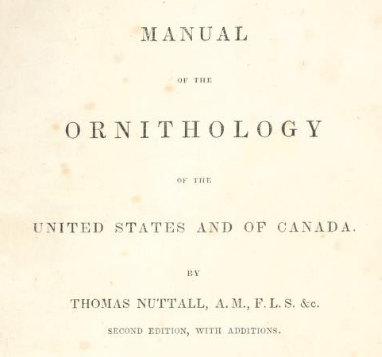
Now in the library of the University of Illinois, this copy of the second, 1840 edition of Thomas Nuttall’s Manual has passed through some very distinguished hands indeed.
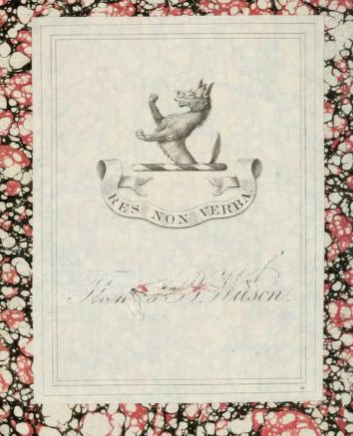
The rather ferocious bookplate on the inside of the front board identifies it as the property of Thomas B. Wilson, born on this date in 1807. Wilson and his brother Edward, among many other contributions they made to the Academy of Natural Sciences, were instrumental in bringing the collections of Prince Masséna to Philadelphia, a coup that instantly cemented the Academy’s reputation as the best place in America to study birds.
Wilson was one of the greatest benefactors of the Academy’s library, but this volume went its own uncertain ways after his death in 1865. The next station we know about was nearly sixty years later, in September 1923, when the book was presented — a fine present indeed — by Charles Reuben Keyes to Harry C. Oberholser.

Oberholser is too well known to require biographical comment. Keyes, on the other hand, is virtually forgotten even in Iowa, where he was born in 1871 and where he died eighty years later. His professional career, spent at Cornell College, was devoted to Germanic philology (Keyes’s 1923 Harvard dissertation was on Rist’s Irenaromachia), but his real passions were ornithology and, especially, archaeology.
The two probably met in Iowa, where Oberholser briefly taught at the end of the 1910s and conducted field work in the early 1920s. I do not know exactly what the occasion was for the gift, but someone with access to the principals’ papers should be able to figure it out. In any event, the book obviously remained in Oberholser’s library until 1948, when he sold his collection to the University of Illinois.
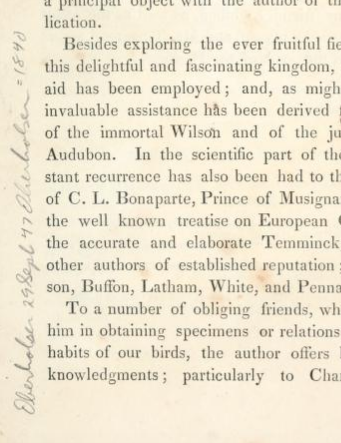
What is puzzling about the book, though, is not its provenance but the mysterious signs of use — or defacement, in a couple of instances — left inside by one or the other of its earlier owners.
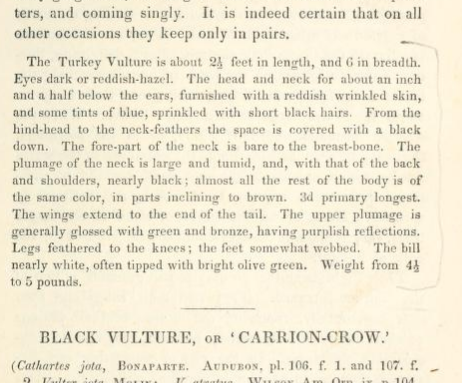
A number of passages, including this diagnosis of the turkey vulture, are marked for excerpting, some of them with the directions “Begin” and “Stop” in the margins.
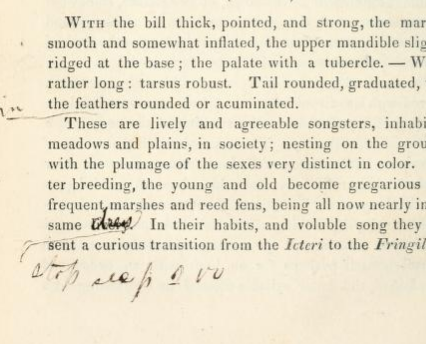
A couple of times our annotator directs that distant passages be combined, as here in the account of the bobolink: “stop, see p. 200,”
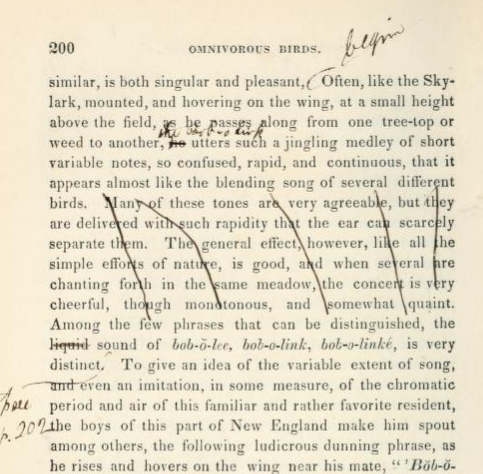
is followed there by “begin” and “stop, see p. 202.”
But these passages aren’t marked just for verbatim quotation. Pius corrector deletes unnecessary words (“liquid sound” becomes simply “sound”), replaces pronouns (“he”) now missing antecedents (“the bobolink”), and even updates Nuttall’s diction (the quaint “livery” changes to “dress”). Similar editorial interventions pop up on the pages Nuttall devoted to the northern bobwhite:

I am fairly sure, a certainty based on only very limited comparative material, that those lines and notes are Oberholser’s. I can’t find my copy of his Texas (where do all my books get to when I’m on vacation?), and my dear friend google isn’t turning anything up, at best sending me back to Nuttall’s unamended text when I search for the edited versions.
I’ll keep looking in the hopes that I can discover just how Oberholser was using these edited passages. It’s possible, though, that we’ll never know: that he excerpted them for a lecture or for an essay never finished, or that they lurk somewhere in the more than two million (!) unpublished words of the untrimmed Texas manuscript.
Or maybe you know.

